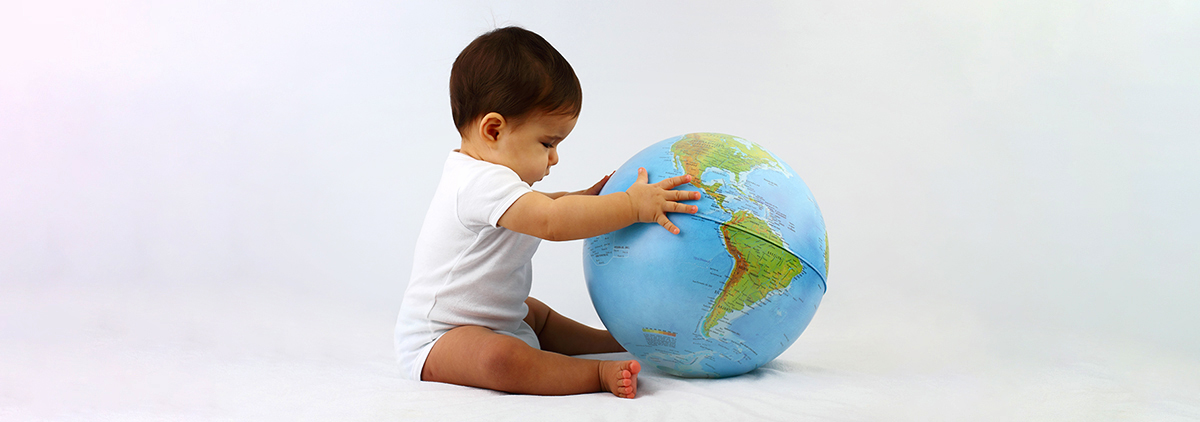Analyzing the Baby Diapers market distinctive traits – focus on India, China and Western Europe
- The world at a glance
- Baby Diapers market in India
- Baby Diapers market in China
- Baby Diapers market in Western Europe
- Sustainability as a stable trend among Millennials: the rise of natural diapers
The world at a glance
According to figures from Euromonitor International and reported into the Nonwovens Industry article “Trends in the Baby Diaper market”, the value of the global 2019 Baby Diaper market was $43.38 billion (real terms, 2019 fixed exchange rate), and it is expected to witness modest growth over the next five years, with a compound annual growth rate (CAGR) of 3.5% to reach an estimated $51.53 billion by 2024.
Developed regions like the US and Western Europe are registering stagnant growth; that said, the lion’s share of current market value still comes from North America, with the United States leading the pack. The tide is changing, though, as emerging economies across the globe, especially China, India, and Brazil, are expected to lead the Disposable Hygiene market in coming years. In particular, the Asia-Pacific region promises ample growth opportunities due to several concurring elements, such as high birth rate, low cost of labor, widespread availability of raw materials and rise in urbanization.
Many are the factors driving the global market. Among them, the growing awareness about health issues of babies and infants, combined with the expansion of Private Label manufacturers, and eco-sustainability becoming more and more a primary concern in the consumers’ minds.
Closely tied to these is premiumization. In recent years, consumers’ habits have evolved: a larger and larger share of population shops online, where near-infinite options are available at a discount. Consequently, demand for high-performing products has gone through the roof. This, coupled with Millennials' appetite for information, plus competition between Private Labels and established brands getting tougher, has pushed manufacturers to pour resources into R&D. Premiumization is a powerful trend in Latin America[1] , where the US influence is strong, and in Europe, where, due to high manufacturing cost, quality is the only way to escape competition[2].
Baby Diaper market in India
Among developing countries, India has by far the greatest potential, with an estimated Baby Diapers market value of $1.7 billion in 2023[3] . This growth will be driven by improved sense of personal hygiene, changing lifestyle, and steady rise in purchasing power among the consumer population.
All that said, it is the population growth, coupled with the decline of infant mortality rate due to advancing healthcare facilities, that puts India at the forefront of the Baby Diaper market, with Baby Pants segment already representing 95% of the total share.
A few other factors bode well, i.e. the number of women in the workforce, increasing 5.6% per year, the rising purchasing power, and next day deliveries becoming more widespread. In this regard, it is worth mentioning that e-commerce is a growing channel for premium and imported diaper products, with rich Indians being the primary target - a trend also common to China in previous years. E-retailers in fact are becoming more and more of a threat to brick and mortar stores. Although the targets of e-retails are mainly upper-middle-income consumers, the higher margins coming from their premium offering may significantly expand the consumer base.
All things considered, India has an enormous potential, which is still largely untapped at the moment. According to Euromonitor 2019 Report, the Baby Disposable Hygiene market in India is only 6% the size it could reach.
Baby Diaper market in China
If India is leading the way, China closely follows, with +7.4% CAGR 2019-2024[4].
The two-child policy and the growing GDP have positively impacted the birth rate, making China a juicy target for manufacturers. In addition to aforementioned factors, it is instrumental the role of automation in streamlining manufacturing[5].
Education, most likely correlated with a stronger awareness regarding hygiene, also plays a big part, conflating with past concerns over product safety. As a result, Chinese parents are looking for high-end, convenient and innovative products that offer an ultra-soft and improved fit, being not shy to turn to foreign brands. The increasing premiumization is especially true among Millennials, an information-hungry, mobile-first demographic that buys from established brands and Private Labels alike, disproportionately favoring e-retailers over brick-and-mortar stores.
Japanese manufacturers in the past exploited China’s positive attitude towards foreign brands, expanding capacity to fill the demand and labeling their products as “Made in Japan”. Also worth mentioning, a segment getting more and more traction in the region is the Pant-style diaper, replacing the less convenient Open-style diapers.
Baby Diapers market in Western Europe
Western Europe is being shaped by pretty much the same forces affecting APAC countries and the US. The most prominent differences are Western Europe’s negative value growth and the precarious position of established brands, more and more threatened by Private Labels, turning from followers to trendsetters.
Not unlike other regions, European parents' decisions are guided by convenience, breadth of choice and premium quality products. Sustainability is also a primary concern for Europeans, enabled by the strengthening of e-commerce across the region, with the UK leading the growth[6].
Sustainability as a stable trend among millennials: the rise of natural diapers
Millennials are green shoppers - now even more so. According to a 2018 inquiry by Nielsen[7], 85% of Millennials demand corporate sustainability. Given these numbers, it should not come as a surprise that Baby Diapers' manufacturers are investing into eco-friendly research and development.
In this framework, a significant trend to be reckoned is the mounting appeal of natural diapers and so-called "free and clear" products. Millennial parents are on the lookout for green-conscious diapers not just for the sake of protecting the environment, but also for the instinctive association between natural and healthy. Building upon this correlation, brands no longer just list ingredients that are present, but also those that are not in order to assuage the ever-expanding eco-friendly market segment.
If you are interested in deepening the subject and understanding what GDM can do for your Baby diapers market-related business, contact us!


